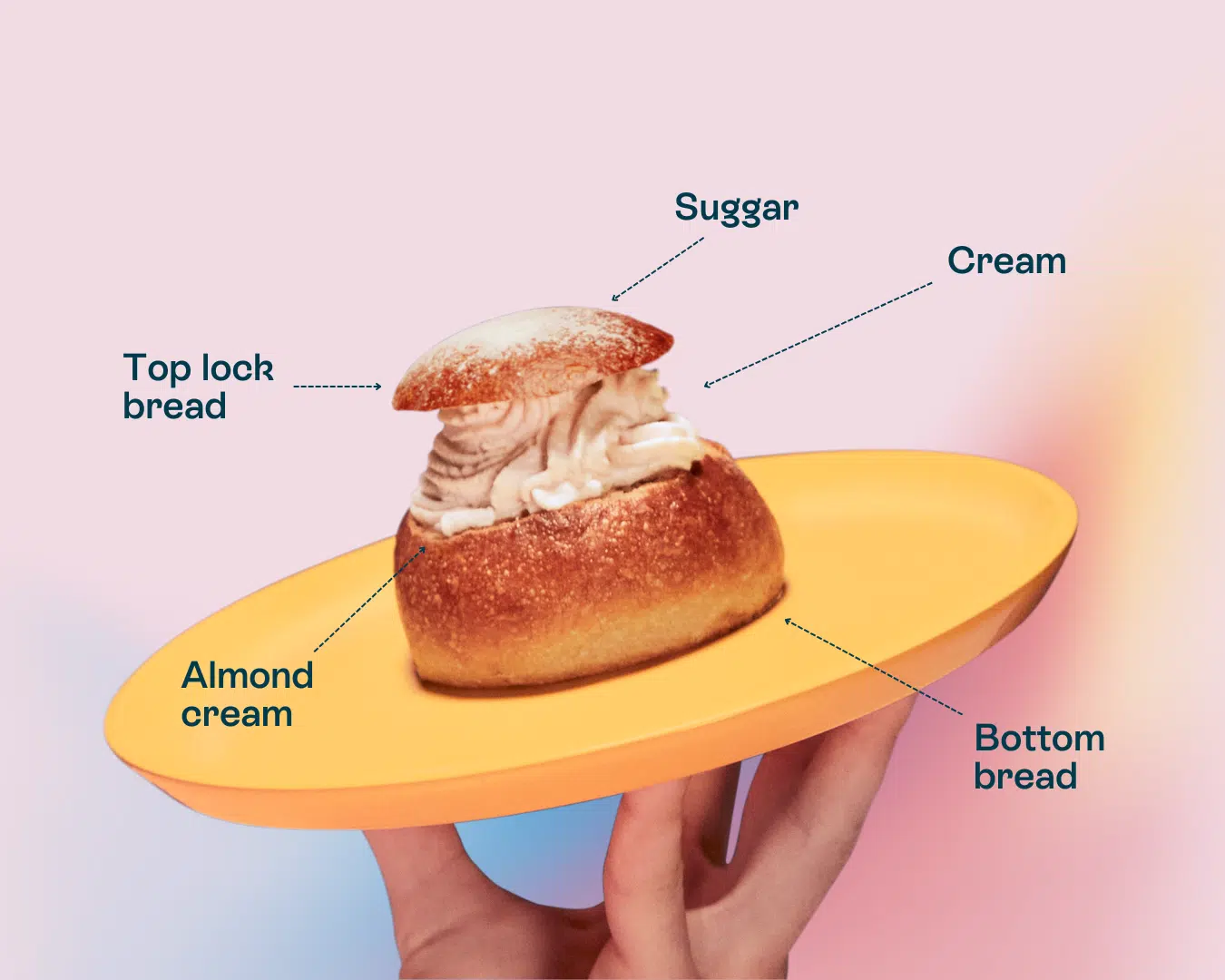Today, March 1st, 2022 is a special day in Sweden. For it is fettisdagen, or Shrove Tuesday, which when translated literally means “the fat Tuesday.” It’s quite a special day. As it’s the day when everyone in Sweden eats the treasured and fabled delicacy of Semla.
What is a Semla?
A semla is a traditional Swedish sweet roll. It’s a fettisdagsbulle, or fat Tuesday roll when literally translated into English. It’s made of cardamom-spiced wheat baked into a bun. Then the top is cut off, while the inside is filled with a mixture of milk and almond paste, which is then topped off with whipped cream. The top is then placed back on as a lid and lightly dusted with powdered sugar. It’s typically served with coffee or tea or eaten on its own. Semlor (plural) definitely make for a solid carb-packed fika addition!
You can find a semla recipe here.

Where does the tradition come from?
Historically, it comes from the Christian fasting period called Lent. Where Swedes would indulge themselves as a last celebratory meal before their fast began. The day where this feast would occur was fettisdag, aka Fat Tuesday. People ate the traditional version of a semla, which was just a bun soaked with hot milk.
As time has gone on the tradition has morphed into something more casual. It took the form of Swedes eating semla every Tuesday from Shrove Tuesday until Easter, but even that started to be too strict. Nowadays, semlor are still associated with fettisdag, but it’s not unusual to see them pop up in stores or bakeries much earlier in the year. Besides, if you visit Stockholm attractions, you will notice a few bakeries putting fettisdag on the shelves.
While the tradition has adapted in Sweden, other countries have also formed their own way to celebrate fettisdag. Fat Tuesday is celebrated in some shape or form in Czechia, the United States, Germany, Italy, and Sweden. Though in those other countries celebrations tend to be more of a merrymaking affair such as Mardi Gras and Karneval.
Did semlor actually kill a king?
Well maybe. Swedish King Adolf Frederick, who ruled from 1751 until his death in 1771, was very fond of Semla. In fact, historians claim that it was his favorite delicacy. With that in mind, he was a king. And kings are known for indulging themselves, sometimes overindulging until they reach a breaking point.
On February 12th, 1771 King Adolf Frederick was having himself a kingly meal consisting of lobster, caviar, kippers, and champagne. To top it all off was a dessert of Semla, served with hot milk. It was said that this meal was so large, that it killed him. As there are reports he ate 14 semlor that later caused him to pass away. While this has since been prescribed to be a popular conspiracy theory in circulation at the time, it does make for a wild piece of trivia.
In the meantime though, glad fettisdag! But maybe stop eating them after number 8 or so.







